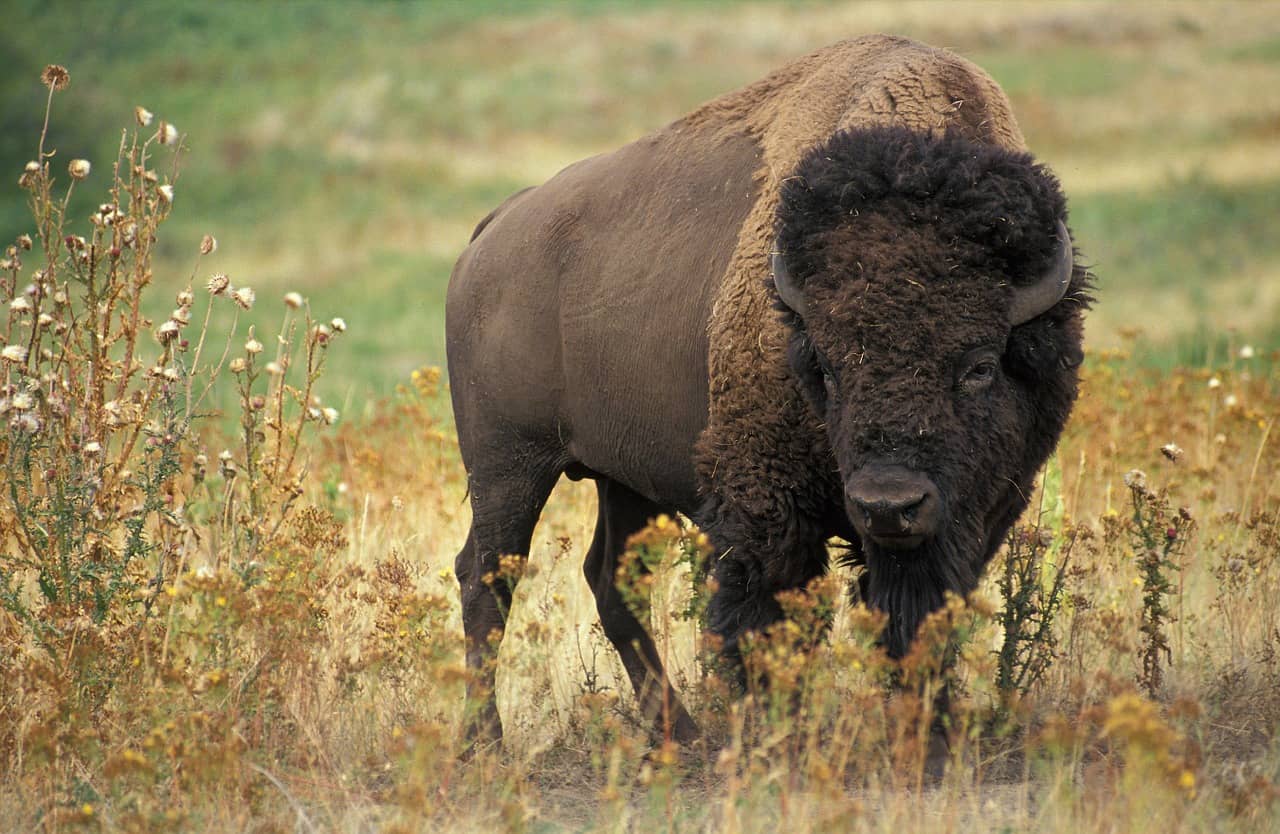Bison were an integral part of North American grasslands before they were removed from over 99% of the Great Plains.
Once, not that long ago, vast herds of bison roamed grasslands around the North American praire, yet at the end of the 19th century they were systematically slaughtered into near-extinction.
The absence of these formerly dominant grazers has hardly been a boon to native plants, however. In fact, reintroducing bison into at least some of their previous ranges around the Great Plains could yield significant benefits to grasslands by doubling plant diversity in tallgrass prairies, say researchers at Kansas State University who examined the effects of grazing bison on vegetation.
“Bison were an integral part of North American grasslands before they were abruptly removed from over 99% of the Great Plains,” explains Zak Ratajczak, an assistant professor of biology who led the research. “This removal of bison occurred before quantitative records and therefore, the effects of their removal are largely unknown.”
To understand those effects better, the scientists conducted research in the Flint Hills Ecoregion in eastern Kansas and northeastern Oklahoma, which supports the largest remaining landscape of tallgrass prairie.
They examined the composition and diversity of native plants under three different scenarios: in which no mega-grazers were present; in which domestic cattle were introduced and allowed to graze during the growing season; and in which bison were reintroduced and allowed to graze freely.
The scientists found that cattle had a positive impact on plant diversity, compared to there being no large grazers present, but plant species richness increased far less than when bison were allowed to graze freely.
“Our results suggest that many grasslands in the central Great Plains have substantially lower plant biodiversity than would have occurred before bison were widely wiped out. Returning or ‘rewilding’ native megafauna could help to restore grassland biodiversity,” Ratajczak notes.
“I think this study also shows that cattle can have a largely positive impact on biodiversity conservation in our region, especially considering that many in cattle production conduct the prescribed fires that have kept these grasslands from becoming woodlands,” the expert adds.
“What this study really suggests is that when it’s economically and ecologically feasible, reintroducing bison might have an even more positive effect on biodiversity conservation.”
In addition to plant diversity, grazing bison also boost plant community resilience to climate extremes such as prolonged droughts. This feature can help protect plant biodiversity on those grasslands from warming temperatures caused by climate change, the scientists add.
“The resilience we found in the bison grasslands is also consistent with the idea that diversity promotes ecological resilience,” Ratajczak says. “And this resilience will only become more important if our climate becomes more extreme.”
This story first appeared on Sustainability Times
Photo: Pixabay/WikiImages
© 2022 Sustainability Times.
This article is licensed under a Creative Commons Attribution-ShareAlike 4.0 SA International License.












